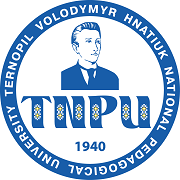FUNCTIONING AND WAYS OF RENDERING OF THE AUTHOR’S INDIVIDUAL SIMILES IN GEORGE ORWELL’S “KEEP THE ASPIDISTRA FLYING”
DOI:
https://doi.org/10.32782/2307-1222.2025-59-12Keywords:
addition, author’s individual simile, author’s individual writing style, concretization, contextual substitution, George Orwell, omission, translator’s transformations, word-for-word translationAbstract
The article explores the functional features and ways of translating George Orwell’s individual similes. This study is relevant for several reasons: first, it addresses the need to examine the author’s distinctive linguistic and expressive devices, which contribute to a deeper understanding of their worldview and writing style; second, it highlights the challenges of conveying unique comparative constructions, which sometimes require non-standard translation solutions; and third, it responds to the lack of research on this topic, underscoring the necessity of a more in-depth analysis of aspects of translation studies related to the author’s stylistic features.The study emphasizes the importance of analyzing George Orwell’s individual writing style, as his works are rich in various stylistic devices, particularly similes, which are a characteristic feature of his linguistic expression. Understanding these elements is crucial for ensuring the adequacy of the translation and the preservation of the author’s expressiveness.The article defines simile as a stylistic device that compares different objects, images or states based on their shared characteristics, and the author’s individual similes are shaped by the subjective-evaluative vision of the author, contributing to his unique style and complicating translation into other languages. It is stated that similes consist of three components: subject, object, and basis. It is found that the most common objects of the author’s individual similes in the novel “Keep the Aspidistra Flying” are animals, containers, artists’ paintings, and materials.The scientific perspectives of P. Pierini and E. Akhmedova on the ways of rendering similes in fiction are presented. The analysis reveals that in the process of translation of the author’s individual similes in the novel, T. Kyryliuk employed word-for-word translation, addition, omission, contextual substitution, concretization, multiple transformations, and introduced comparative constructions into the translated text as well.
References
Ахмедова Д. Стратегії англо-українського перекладу художніх порівнянь: когнітивний аналіз. Науковий вісник Херсонського державного університету. Серія «Германістика та міжкультурна комунікація». 2020. Вип. 2. С. 92–99. https://doi.org/10.32999/ksu2663-3426/2020-2-13.
Єрмоленко А., Шванова О. Контекстуальні заміни при перекладі літератури в галузі «Політологія». Фаховий та художній переклад: теорія, методологія, практика : збірник наукових праць / за заг. ред. С. Сидоренка. Київ : Аграр Медіа Груп, 2021. С. 89–95.
Іконнікова М. Особливості індивідуального стилю в різних видах дискурсу (на матеріалі творів Д. Оруелла). Вісник Житомирського державного університету імені Івана Франка. 2006. № 27. С. 175–177.
Король Т., Денисенко В. Особливості перекладу порівнянь з англійської мови (на матеріалі роману О. Вайльда «Портрет Доріана Грея»). Науковий вісник Херсонського державного університету. Серія «Перекладознавство та міжкультурна комунікація». 2018. Вип. 1 (2). С. 133–137.
Марчук Т., Лисак К. Лінгвостилістичні засоби вираження ідіостилю Марини Левицької в оригіналі та перекладі (на матеріалі роману «Коротка історія тракторів по-українськи»). Сучасні дослідження з іноземної філології : збірник наукових праць. Вип. 1 (19) / відп. ред. М. Фабіан. Ужгород : Видавничий дім «Гельветика», 2021. С. 90–98.
Молчко О. Художнє порівняння як перекладознавчий феномен (на матеріалі англійської та української мов). Studia Ukrainica Posnaniensia. 2017. Vol. V. P. 129–134. DOI: 10.14746/sup.2017.5.15.
Ніконова В., Луценко Р. Образні порівняння як засоби репрезентації індивідуально-авторської світобудови та їх відтворення в художньому перекладі (на матеріалі українських перекладних версій сучасної англійської поезії). Вісник Київського національного лінгвістичного університету. Серія «Філологія». 2019. Т. 22. № 2. С. 193–201. https://doi.org/10.32589/2311-0821.2.2019.191992.
Орвелл Дж. Нехай квітне аспідистра / з англ. пер. Т. Кирилюк. Київ : Вид-во Жупанського, 2021. 256 с.
Панченко О., Клименко Т. Конкретизація та її різновиди в практиці художнього перекладу з англійської мови українською. Наукові записки. Серія «Філологічні науки». 2024. № 207. С. 190–194. https://doi.org/10.32782/2522-4077-2023-207-28.
Пушик Н. Особливості перекладу художніх творів. Науковий вісник Міжнародного гуманітарного університету. Серія «Філологія». 2022. № 54. С. 208–211.
Шевкун А. Особливості перекладу індивідуально-авторських тропів (на матеріалі роману І. Мак’юена “Atonement” та його перекладів українською і російською мовами). Науковий вісник Міжнародного гуманітарного університету. Серія «Філологія». 2019. № 42. Т. 3. С. 89–92.
Fadee E. Translation techniques of figures of speech: A case study of George Orwell’s “1984 and Animal Farm”. Journal of English and Literature. 25 October, 2011. Vol. 2 (8). Р. 174–181.
Huang L. Style in Translation: A Corpus-Based Perspective. Shanghai Jiao Tong University Press. Springer, 2015. 161 p.
Orwell G. Keep the Aspidistra Flying. London : Arcturus, 2021. 284 p.
Perini P. Simile in English: From description to translation. Círculo de Lingüistica Aplicada a la Comunicación (clac). 2007. № 29. P. 21–43.










